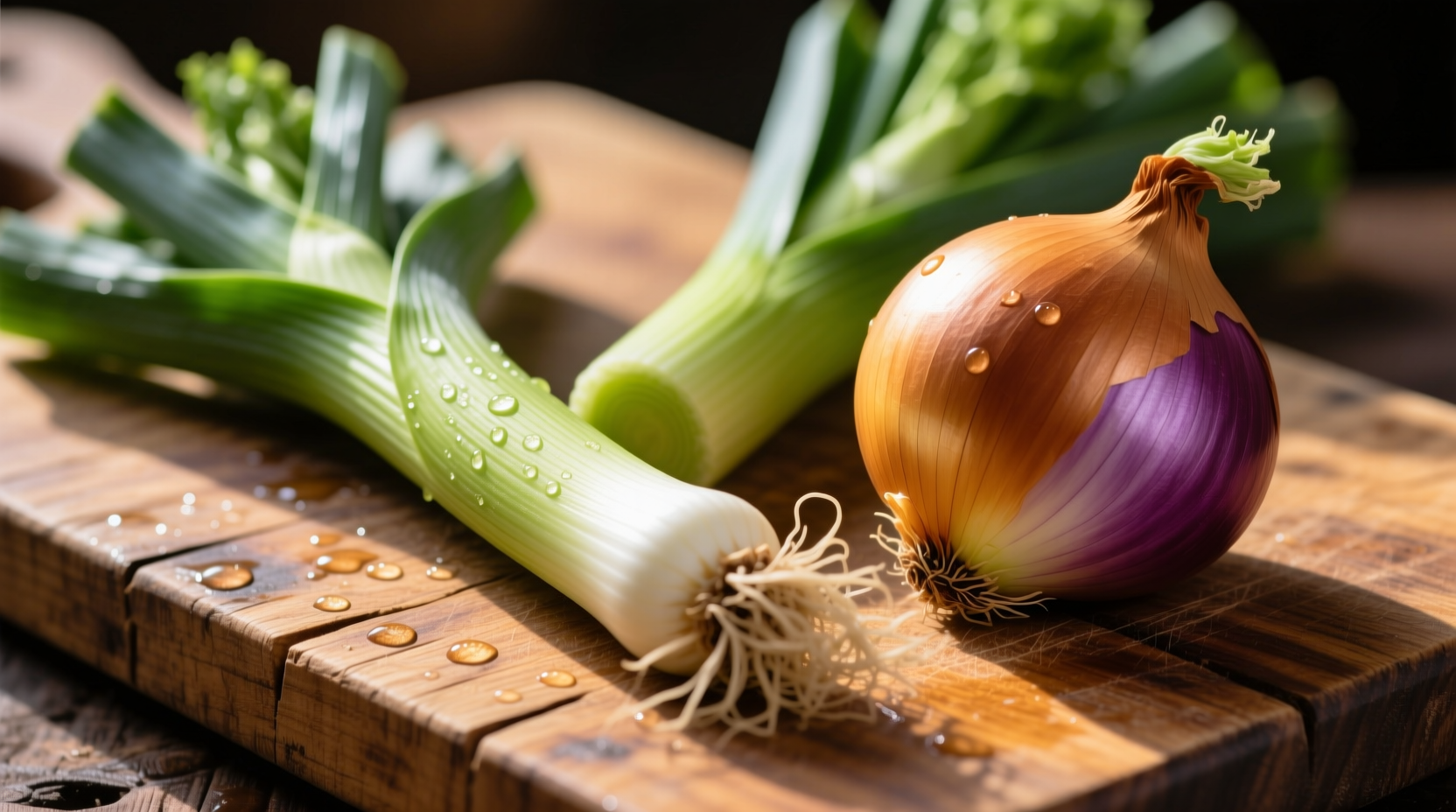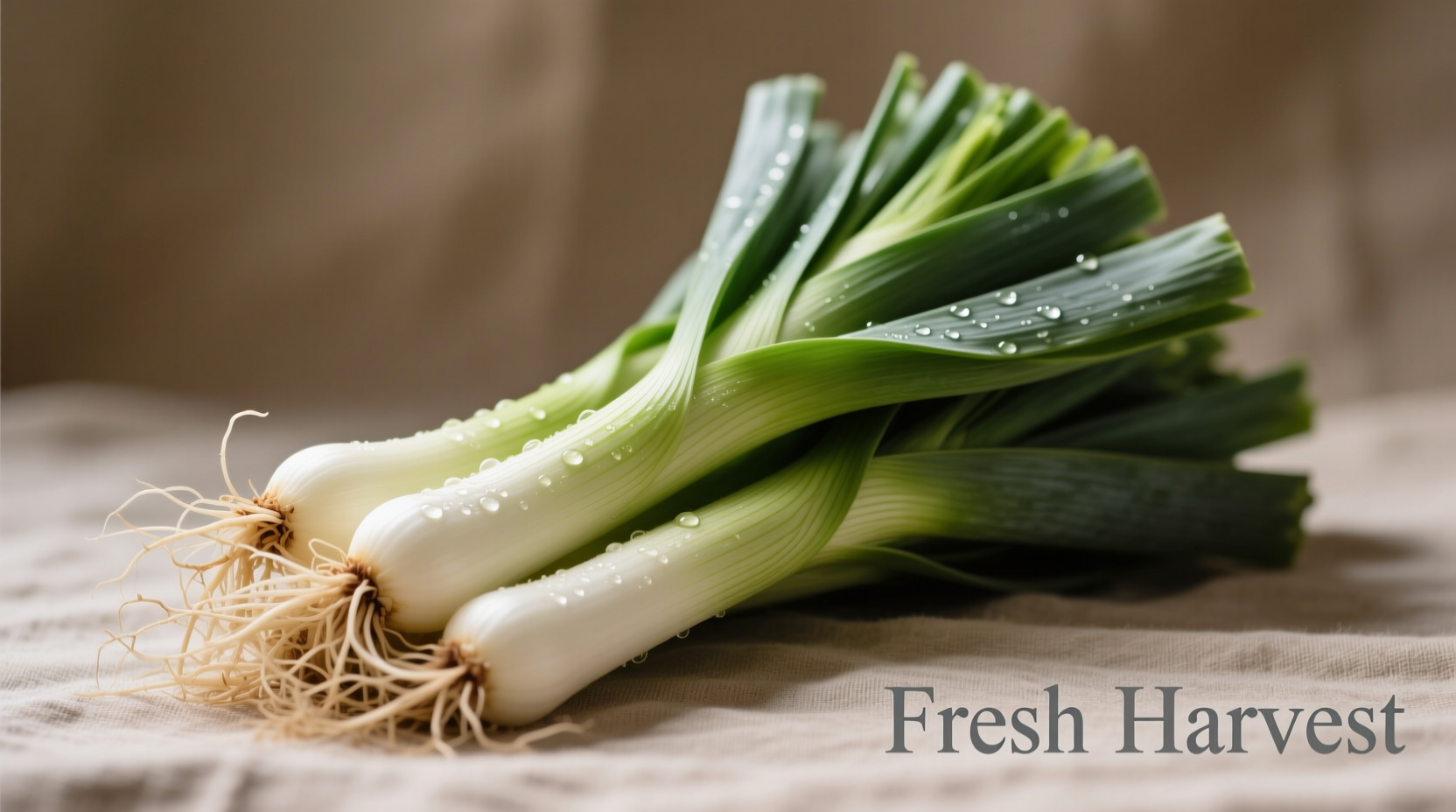When you're scanning produce aisles or reading recipes, encountering the term "onion leeks" creates understandable confusion. Professional chefs and home cooks alike often wonder whether this refers to a specific cultivar, a regional name, or simply a terminology mix-up. Let's clarify this botanical misconception once and for all while providing practical cooking guidance you can use tonight.
Why the Confusion Exists
The "onion leeks" misunderstanding typically occurs for three reasons: visual similarity in early growth stages, overlapping culinary uses, and inconsistent naming across regions. Young leeks resemble large scallions, while mature leeks develop a distinctive cylindrical shape that differs significantly from bulb-forming onions. According to the Royal Horticultural Society, this confusion dates back to medieval European gardening practices when both plants were cultivated in kitchen gardens with minimal botanical distinction.
| Plant Type | Scientific Name | Distinctive Features | Flavor Profile |
|---|---|---|---|
| Leeks | Allium ampeloprasum var. porrum | Cylindrical stalk, no bulb formation | Delicate, sweet, mild onion flavor |
| Onions | Allium cepa | Distinct bulb formation | Sharp, pungent, varies by type |
| Scallions | Allium fistulosum | Hollow green tops, small white bulb | Mild, fresh, grassy notes |
| Welsh Onions | Allium fistulosum | Similar to scallions, perennial | Subtly sweet, less pungent |
Historical Context of Allium Confusion
Understanding the evolution of these plants helps clarify modern terminology. Archaeobotanical evidence from the Journal of Archaeological Science shows that ancient Egyptians cultivated both onions and leeks separately as early as 3200 BCE. The confusion emerged during European colonization when settlers encountered New World Allium varieties and applied familiar terms indiscriminately. By the 18th century, botanical classification began distinguishing these plants, but culinary terminology lagged behind scientific understanding.
Practical Cooking Applications
Knowing the difference matters significantly in your cooking. Leeks offer a more delicate flavor that works beautifully in soups, sauces, and delicate dishes where onion's sharper bite would dominate. When substituting:
- For raw applications: Use the white and light green parts of leeks in salads (soak thoroughly to remove grit)
- For cooking: Substitute 1 cup chopped leeks for ¾ cup onions to maintain flavor balance
- For stocks: Leeks create a sweeter, more refined base than onions
- For roasting: Whole baby leeks make elegant side dishes with caramelized sweetness

Selecting and Preparing Properly
When shopping for leeks (not "onion leeks"), look for firm, straight stalks with crisp blue-green tops. Avoid yellowing or wilting. The USDA Agricultural Research Service notes that proper cleaning is crucial—leeks contain significant grit between layers that requires thorough washing. Slice leeks lengthwise, submerge in cold water, and swish to release trapped soil before draining.
When Substitutions Work (and When They Don't)
While leeks can often replace onions, certain dishes demand specificity. Use this practical guide:
- Safe substitutions: Potato leek soup, quiches, creamy sauces, roasted vegetable medleys
- Avoid substitutions: French onion soup, onion rings, dishes requiring sharp onion bite, pickling recipes
- Partial substitutions: Sauté ½ leek + ½ onion for balanced flavor in stir-fries and braises
Nutritional Comparison
Both plants offer health benefits, but with notable differences. According to USDA FoodData Central, leeks contain higher concentrations of vitamin K and folate, while onions provide more vitamin C and certain antioxidants. A 100g serving of cooked leeks delivers 25% of your daily vitamin A needs compared to onions' 2%, making leeks particularly valuable for vision health.
Common Misconceptions Clarified
Three persistent myths need addressing:
- "Baby leeks are young onions" – False. Baby leeks are simply harvested early; they'll never develop onion bulbs
- "Welsh onions are the same as leeks" – Incorrect. Welsh onions (Allium fistulosum) are perennial scallions with different growth habits
- "Leeks are just mild onions" – Oversimplified. Leeks have unique sulfur compounds creating their distinctive flavor profile
Perfect Pairings for Leeks
Maximize leek potential with these chef-recommended combinations:
- Cream and potatoes – Classic for vichyssoise and gratins
- Lemon and white wine – Brightens their natural sweetness
- Mushrooms and thyme – Creates earthy umami depth
- Smoked fish – Complements their delicate flavor without overpowering











 浙公网安备
33010002000092号
浙公网安备
33010002000092号 浙B2-20120091-4
浙B2-20120091-4